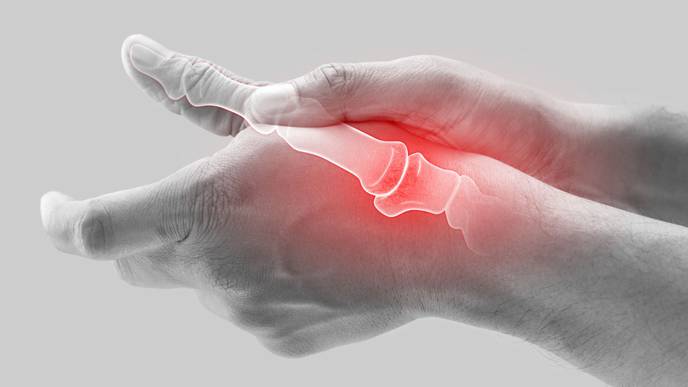Arthritis Foundation and Cleveland Clinic to Build National Osteoarthritis Imaging Center for Clinical Trials

10/19/2023
The Arthritis Foundation has named Cleveland Clinic as the future home for its Osteoarthritis Imaging Center (OIC), designed to become the largest repository in the country for imaging data from post-traumatic osteoarthritis clinical trials and therapies.
The OIC will coordinate imaging for all future multicenter osteoarthritis clinical trials across the U.S. that are run through the foundation’s Osteoarthritis Clinical Trial Network. Images from these studies will be sent to the OIC for interpretation and analysis. Researchers and physicians can reference them in a central location for future studies and patient care.
Osteoarthritis is the most common form of arthritis. Cartilage, which acts as a cushion to protect bones from friction, wears down over time and leads to bone damage, inflammation and pain. Osteoarthritis is most common in adults over age 55, but can appear in people of all ages, especially after injury.
In phase one of the $2.5 million grant, researchers at Cleveland Clinic will build the infrastructure for gathering and archiving these images from sites around the country.
“Gathering comprehensive imaging data is often resource limited. It is time consuming and costly to obtain large numbers of patient images,” said co-principal investigator Xiaojuan Li, Ph.D., professor of Biomedical Engineering, and director of the Program of Advanced Musculoskeletal Imaging (PAMI) at Cleveland Clinic. “By establishing a large, central hub, we can provide the support needed to collect the ‘big data’ in a standardized manner that researchers need to solve problems and develop new treatments.”
In these clinical trials, patients receiving care for osteoarthritis are imaged over a specific amount of time. Each imaging exam contains information for researchers to better understand the disease and treatment effects, and for physicians looking for comparable cases.
“The OIC is designed to provide core lab services for institutions conducting clinical trials that otherwise might need to be subcontracted out at a higher expense,” says Dr. Li. The OIC also will serve to standardize the types of images collected, providing larger sample sizes and quality data.
“Through standardizing the images and data that come from clinical trials, it will be easier to translate some of the research findings into patient care,” says Carl S. Winalski, M.D., co-principal investigator, radiologist and clinical director for the Program of Advanced Musculoskeletal Imaging “Instead of weeding through hundreds of images to find a comparable case, the OIC will provide a searchable library and connect physicians to the information they need.”
Providing new imaging techniques and biomarkers
The OIC builds on years of collaboration and research focused on improving care for patients with musculoskeletal disorders at Cleveland Clinic. Within the Musculoskeletal Research Center is the Program of Advanced Musculoskeletal Imaging, where physicians, engineers and scientists work together to advance imaging technology, education and collaboration with other institutions.
The OIC will collect and analyze data from multiple imaging modalities including magnetic resonance imaging (MRI), computed tomography (CT) and radiography. Dr. Li’s research focuses on translating advanced musculoskeletal imaging techniques, in particular quantitative MRI, to clinical care in multiple musculoskeletal disorders. Radiographs are standard for osteoarthritis care, but having access to more highly sensitive MR and CT imaging should provide the foundation for additional biomarkers to catch osteoarthritis early and guide treatment, she says.
Young patients, old knees
One Arthritis Foundation clinical trial that’s part of the OIC will investigate the anti-inflammatory effects of metformin, a medication typically used to treat Type 2 diabetes, in patients with post-traumatic osteoarthritis. Osteoarthritis is more common in older adults, but younger patients can develop the condition after injury, called post-traumatic osteoarthritis.
Patients who get injured as teenagers during activities like sports can return to normal activities and sports with surgical or conservative treatment. A significant portion of these young patients then start developing signs of osteoarthritis in that joint 5-to-10 years after the initial injury, according to Dr. Li. Those patients would then start dealing with arthritis symptoms as early as their late 20s.
Researchers are trying to figure out why this happens and develop new strategies to help these patients manage their condition in the long term – or prevent it all together. Dr. Li says that having more data on these younger patients in the OIC image repository will help these efforts.
“More data from these patients is critical to developing treatments that can slow down progression and prevent lifelong pain,” Dr. Winalski said.

Facebook Comments